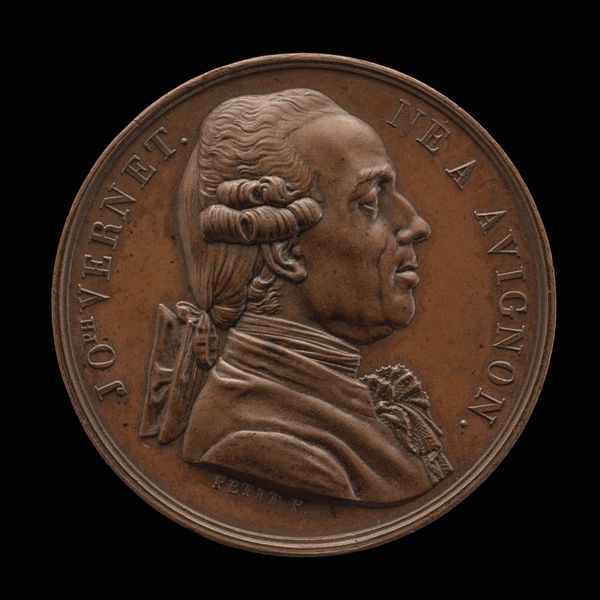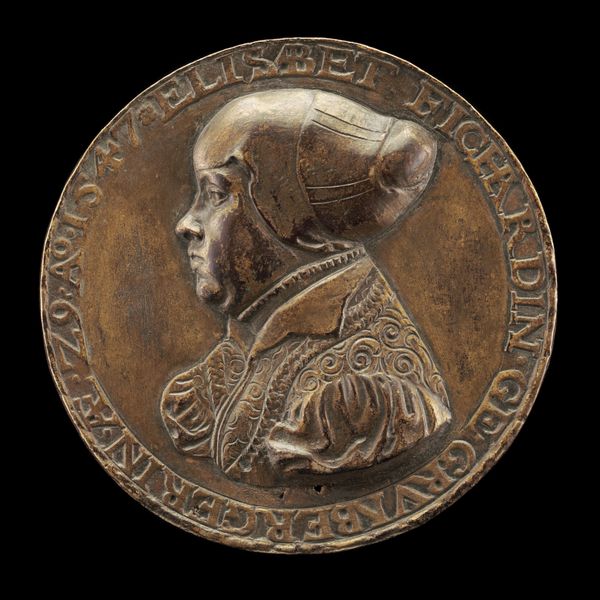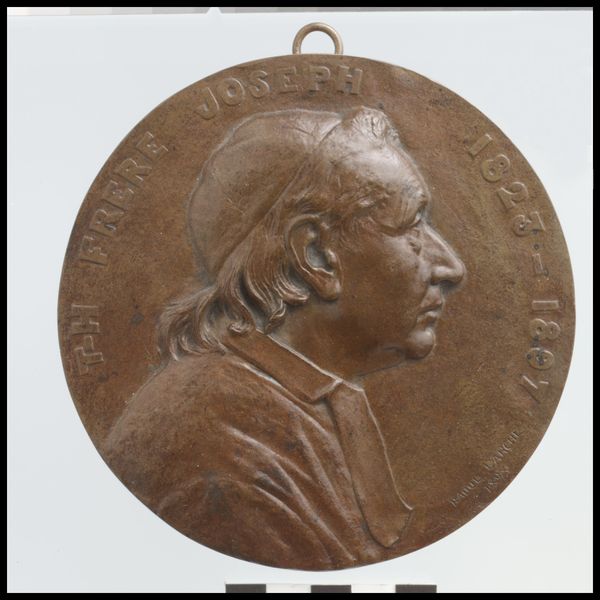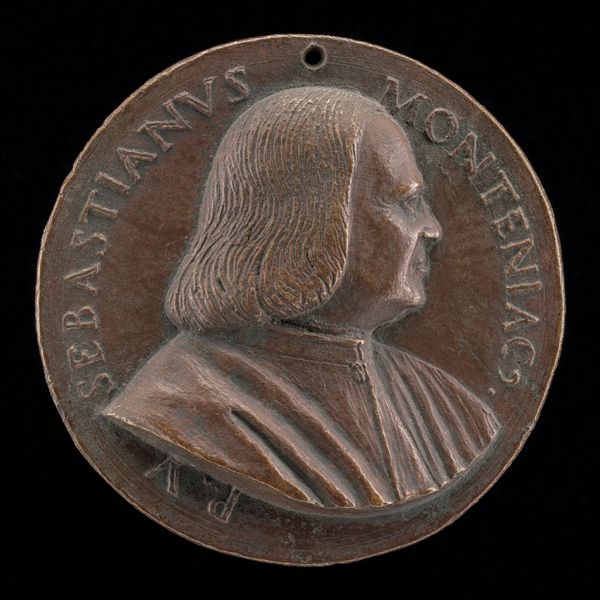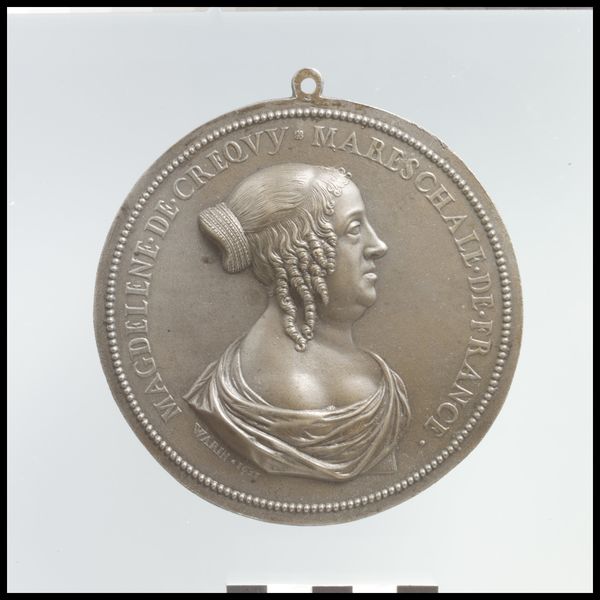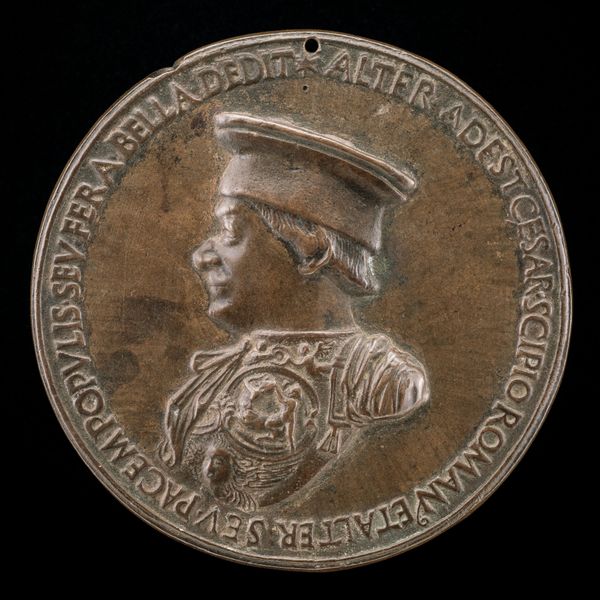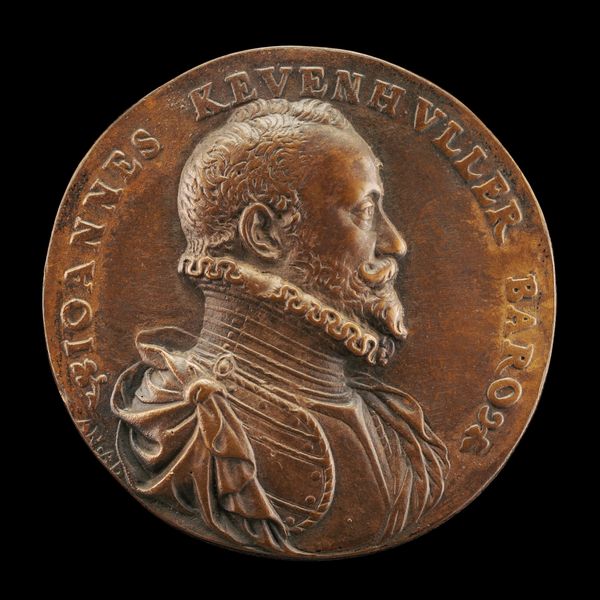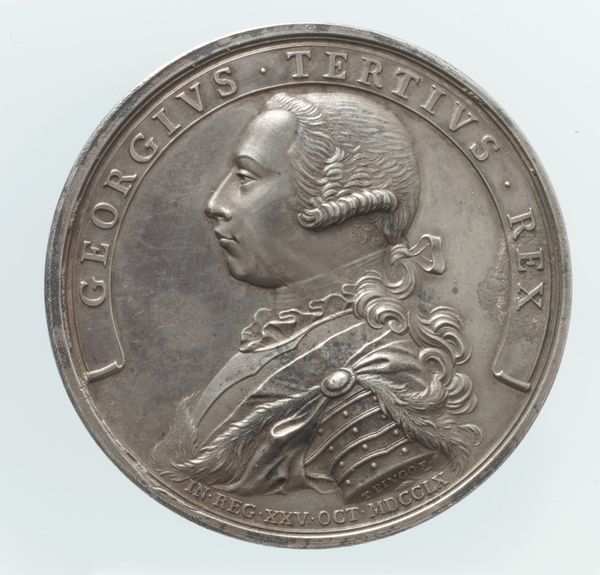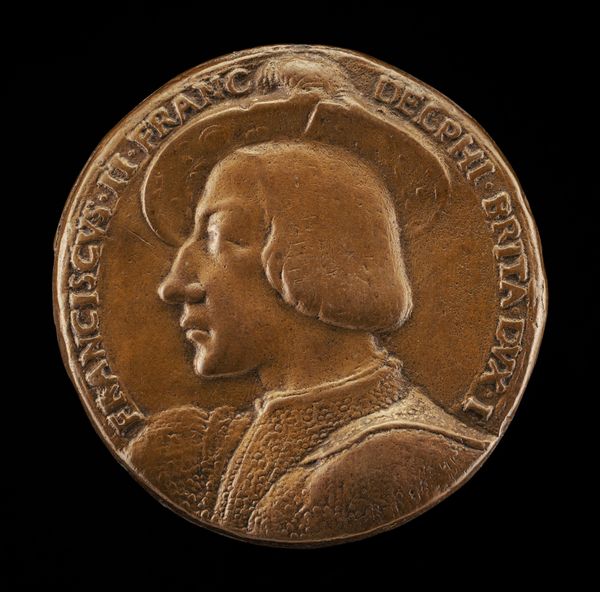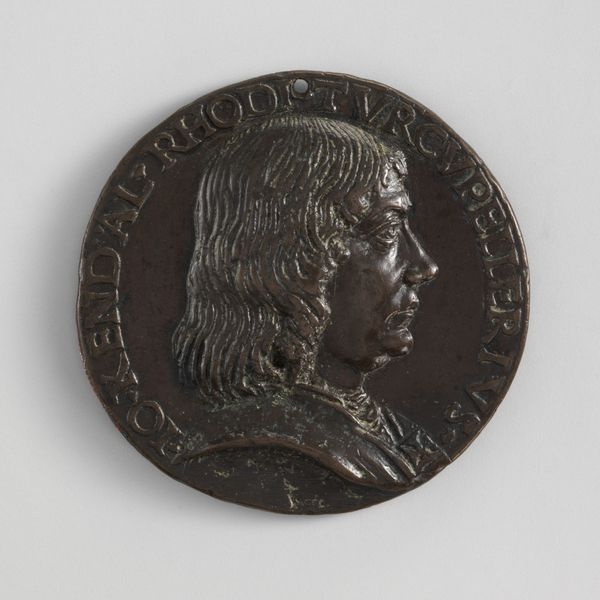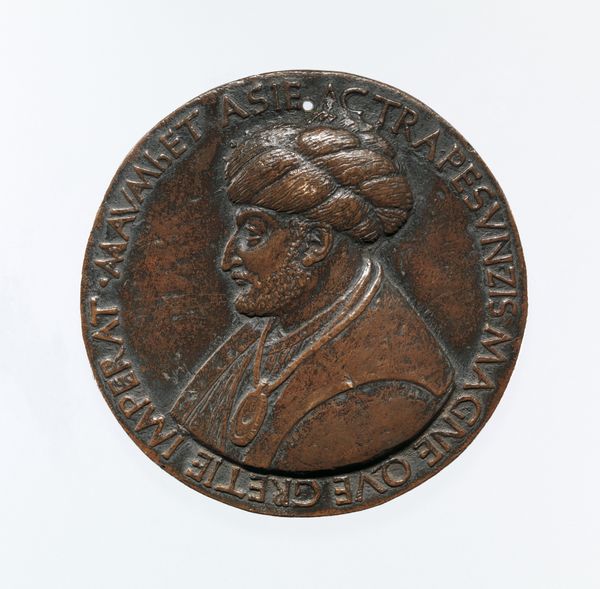
sculpture
portrait
sculpture
charcoal drawing
oil painting
sculpture
decorative-art
profile
Dimensions: Diam. 47 mm.
Copyright: Public Domain
Editor: Here we have "Golden Jubilee of George III" from 1810, currently housed at the Metropolitan Museum of Art. From my understanding, it's a sculpture and the use of bronze gives it a stately yet somber feel, right? I'm curious, how do you interpret a piece like this, Professor? Curator: Well, you've already touched on something vital – the somber feel! It's easy to see a portrait, but look closer: It’s a symbolic marker. It screams, "Remember this!" – not just a man, but an era, right as it hits a…well, a golden milestone. Editor: A golden milestone... So, beyond being a simple commemoration, what were they hoping to communicate? Curator: Ah, excellent question. Consider the political climate. England faced war with France, Napoleon's shadow looming large. George, though aging, represented stability, continuity, a stubborn Englishness. Don’t you think this medallion almost becomes a piece of patriotic propaganda? Editor: Hmm, propaganda, in a way. It's interesting how an object can serve as a piece of history on its own, as a patriotic symbol or simply a status symbol of having an association with the Jubilee celebration. The artist has captured such personality. Curator: Precisely! And to consider, while we are examining art of great political figures, how can we be certain they are not filtered to portray what they are *meant* to be. Always remember the purpose. What a marvelous way to learn how a physical image can act as historical text. Editor: Thank you. I'll definitely keep that in mind as I move forward in my studies.
Comments
No comments
Be the first to comment and join the conversation on the ultimate creative platform.

